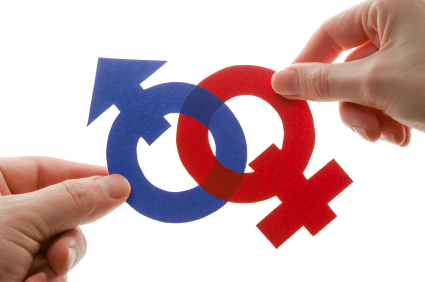I’ll say it: men and women are different. By many measures—physically, biologically, brain chemistry, shoe choice—we are different.
We are the same, too. We like to laugh. We are fierce protectors of those we love. We seek meaningful work to occupy our time.
Can both men and women reconcile these two disparate notions and be effective leaders? If you read the business literature and believe what the media tells us, apparently not.
In my business reading, I see it time and time again—the pitting of men “against” women or vice versa as a model of leadership effectiveness. For the longest time, the “male” or “masculine” archetype was the business model to aspire to. This was certainly my experience when I entered the workforce in the mid-1980’s.
Over the past two decades, the tide has turned and now, it appears, it’s we woman who are “better” in the leadership arena. There is no shortage of articles touting research of the latest “proof” that women make better managers. For example, last year journalists Katty Kay and Claire Shipman wrote the book Womenics and declared in a Washington Post article—Fixing the Economy: It’s Woman’s Work. Last month, the Atlantic Magazine published an article called The End of Men, chronicling the social and economic factors that are slowly shifting in favor of women.
Yes, I’m proud of the strides we women have made in our impact as leaders in the business world. In my opinion, it’s not necessary that the other (roughly) half of the population has to be marginalized in the process. Feminist Gloria Steinem makes the same observation. In an interview with Katie Couric, Ms. Steinem and Women’s Media Center director Jehmu Greene discussed issues surrounding women’s equality. During the interview, Couric asked what they were most disappointed in regarding the conversation about women’s issues. Steinem replied:
I think that we haven’t made a dent . . . in the idea that somebody has to win. We’re still living in an “either/or” culture, not in an “and” culture. We’re still ranking instead of linking. We still have a sort of hierarchical view of life instead of a circle. And actually for most of human history, we’ve lived the other way. It’s been about linking, not ranking. The circle was the paradigm of society.
Any list of effective leadership traits will contain elements of both the “feminine” and the “masculine”. When it comes to a leadership approach, it’s not “which approach—feminine or masculine?” but rather “which one when?” There is a time and place for both styles. My advice to leaders is to learn how to capitalize on your unique strengths, be they the “typical” domain of the masculine, the feminine, or perhaps some as-yet-undefined third domain that successfully combines the two. As a business community (and society) we benefit by integrating the best of what both genders have to offer.
photo credit: istockphoto.com © Vasiliy Yakobchuk

Well said! Bravo! I work with women leaders who, while criticizing men for posturing for the ‘one-up’ position, are mimicking that same behavior when they make men ‘wrong’ in their leadership style. My company’s brand is based on the philosophy of being “for women without being against men.” We need more people, like yourself, to keep reminding all of us that collaboration and diversity demands that everyone gets to play.
Nancy,
Thanks for stopping by The People Equation. What an interesting and positive niche your company has– being “for” women without being “against” men. It’s that sort of message that will help us move past the either/or debate of leadership effectiveness and gender.
Emotionally intelligent men and women are androgynous and lead effectively with integrity. That’s all I’m saying. 😉